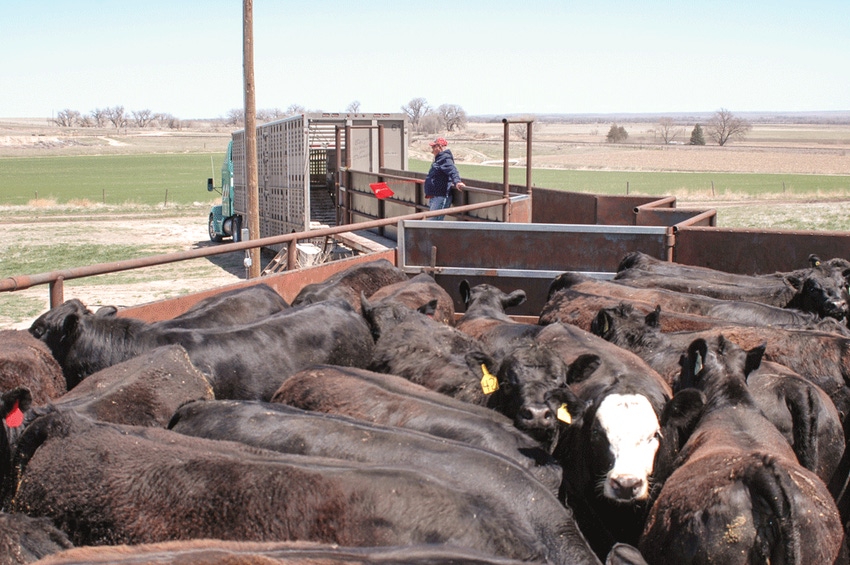Understanding challenges to price discovery — and possible solutions — means recognizing why most sellers prefer alternative marketing methods. Part 1 of a multipart series.
April 7, 2016

“The daily fed cattle market is characterized by spotty price quotes, small trade volume, few buyers and sellers, and concerns over the representativeness of publicly reported cash market prices.”
Rather than a current observation, the above quote is from a 2000 study, “Alternatives to Cash Prices in Fed Cattle Price Discovery,” by Ted Schroeder, agricultural economist at Kansas State University, and James Mintert, agricultural economist at Purdue University.
At the time, the industry was still in the crawling stage of figuring out ways to reward cattle based on individual merit, rather than simple averages. The resulting value grids and formulas were largely the response of packers to a growing number of cattle feeders tired of subsidizing below-average cattle at the cost of above-average ones.
Now, upward of 80% of all fed cattle are traded via what are termed Alternative Marketing Arrangements (AMAs), which typically utilize prices discovered in the spot cash market, but do nothing to contribute to price discovery there. AMAs include marketing methods like formulas and forward contracting.
So, you have fewer and fewer fed cattle traded in the cash market providing a discovered price used as a component or reference point in most every other cattle market you can think of, from cash markets for calves, feeder cattle and beef, to futures markets for live cattle and feeder cattle. Along with wondering how thin is too thin when it comes to effective price discovery in the fed cattle market, there are also questions of how representative the 20% are of the other 80%.
Recognition of such challenges, real and potential, is as old as AMAs themselves. Since their development, plenty of folks worried about their impact on cash market function, as well as byproducts of such a system, including captive supplies.
It’s only in recent years that attempts began to understand how much cash trade is needed for effective price discovery or ways to prop up the current cash system.
While marketing methods have evolved significantly, if Mark Twain was a modern-day cattle feeder, he could be forgiven for thinking: “Everyone talks about the markets, but no one ever does anything about them.”
AMAs offer more
At least as important as fixing the cash market — if that’s what the industry decides to do — is understanding why cattle feeders mostly opt to trade cattle outside of the cash market, says Derrell Peel, Extension livestock marketing specialist at Oklahoma State University.
Stephen R. Koontz, agricultural economist at Colorado State University, is finding such answers as he conducts the multiyear Price Discovery Research Project (PDRP) for the National Cattlemen’s Beef Association. It aims squarely at determining whether or not the current cash market for fed cattle is still effective in discovering price, and why cattle feeders choose one marketing method compared with another.
According to the cattle feeders and packers surveyed for the PDRP, AMAs provide too much cost savings and efficiency to relinquish.
“Mainly, formula operations viewed selling in the cash market as at least an added cost of $25 per head. The cash market had value in terms of price information but not in terms of opportunity,” Koontz explains in the PDRP executive summary.
Those who use forward-contracting quantified a $15- to $25-per-head price advantage compared with selling in the cash market.
For clarification, Koontz explains that AMA transactions use prices discovered by individuals not involved in the transaction. For instance, formulas — the most prevalent AMA — might use packing plant average prices or a regional price as the base price before premiums and discounts are applied.
“Formula trades do no price discovery and make use of the information provided, and resources expended elsewhere, on prices discovered by others,” Koontz emphasizes. “Formula trades use both base prices and premiums and discounts discovered through other means.”
Formula trades are scheduled with packers at least two weeks ahead of delivery and often longer, Koontz explains. While packers choose the day of the week for pen slaughter, the decision of which week to ship the cattle is up to the feedlot.
Whether the formula is long term or short term in nature, the terms of the formula — how the base price will be calculated at delivery — are known, along with premiums and discounts. But the actual base price depends on the day the cattle feeder sends the cattle to the packer — what the elements of price formula are doing that day.
“The bottom line is that the feeder wants to sell the cattle, the packer wants to buy the cattle, and both want to pay or be paid the ‘market price,’ ” Koontz says.
Conversely, folks who forward-contract cattle negotiate a price — outside of the spot cash market — and transfer ownership to the packer in advance of delivery.
In both cases, AMAs help cattle feeders and packers manage various risks, including those associated with transaction cost, cattle price and supply chain management. Koontz explains formula trades and forward contracting enable cattle feeders to source cattle aligned more closely with market price opportunities.
Another way of looking at it is that AMAs can segregate cattle into more homogenous groups that more readily fit the specific carcass demands of various value-added programs. The ultimate price received may be higher in such programs. Transaction costs are often lower, in part because many of the components of trade are known and standardized rather than fodder for constant negotiation.

70 photos show ranchers hard at work on the farm
Readers have submitted photos of hard-working ranchers doing what they do best - caring for their livestock and being stewards of the land. See reader favorite photos here.
Packers and feeders can also gain efficiency in capacity utilization when they have a clearer sense of what kind of cattle will be arriving, when they’ll arrive and which specific markets they fit.
Horizontal prices in vertical world
“You can discover price horizontally or vertically,” Peel explains. “So far, the cattle industry has chosen to discover price horizontally.”
The auction market for calves and feeder cattle is a sterling example of horizontal price discovery.
Hundreds of thousands of head trade every week. Buyers and sellers determine a price that is publicly reported. In any given week, there’s plenty of confidence in knowing at least an average price for calves in the same region of similar weight, condition, muscle and frame.
If you want to know the price of one calf, you identify the prices of similar calves — horizontal.
Price discovery for cash fed cattle remains horizontal, too. If you want to know what steers are worth any given week in Kansas or the Texas Panhandle, you see what those of similar quality brought in those same areas — if any or enough of them traded in the cash that week.

“So far, the cattle industry has chosen to discover price horizontally.†-- Derrell Peel
Current fed cattle cash price discovery also reflects expectations — real or perceived — of downstream value associated with things such as quality grade and yield, at least to a point.
Formulas and even grids represent a hybrid marketing method of sorts, which is more vertical in nature. They include a price discovered in the cash market, and then apply a schedule of premiums and discounts based on carcass performance.
Only a handful of programs today determine the price for fed cattle vertically in the truest sense. Ultimately, they reward cattle based on their wholesale and retail value in specific markets.
A live price equivalent may be determined for the purposes of accounting and what not, but the animal is rewarded based on the actual retail value.
For Peel then, the first question about price discovery for fed cattle revolves around whether cash markets effectively communicate the signals necessary, given the transition to more vertical transactions.
Put down your pitchforks and lighter fluid. Peel isn’t suggesting that the industry abandon cash markets.
When all is said and done, they may remain the most effective method for discovering fed cattle prices. He’s saying that pondering their value versus some alternative is legitimate — at least as legitimate as trying to figure out how to fix cash markets.
Next month: How cash fed cattle influence other markets.
You might also like:
10 photo finalists celebrating spring
Burke Teichert: How to manage your way out of a hard-calving cowherd
2016 market outlook: Here's what to expect
Getting first-calf heifers ready for the breeding
About the Author(s)
You May Also Like





